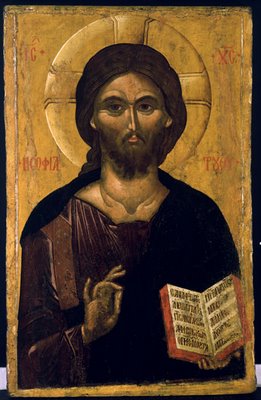
On Monday you will have a test over Chapter 4, Rome, and Chapter 7, Byzantium
It will be similar to the last test, with fill-in-the-blank and multiple choice questions.
Be sure to do the art, architecture, philosophy and theology sections of the Multiple Choice and True False quizzes on the course companion site here. Scroll down to get to the chapter you need.
CHAPTER 4: ROME
You will be responsible for pages 80-94; 96-100; 102-116
Be sure you can identify/define the following:
Augustus Caesar
Marcus Aurelius
Ius Civile
Ara Pacis
Augustus of Prima Portaarch
barrel vault
dome
Pantheon
oculus
From video: be able to identify and explain
Appian Way
Nero's Domus Aurea, or "Golden House"
Vespasian, the "Anti-Nero"
Colosseum (also known as Flavian Amphitheater)
Trajan's Forum (including Trajan's Column, Trajan's Market)
Hadrian's Wall
(Hadrian's) Pantheon
Baths of Caracalla
Be able to:
Link the following emperors with their engineering project:
1) Julius Caesar + Appian Way;
2) Augustus Caesar + aquaducts;
3) Nero + Domus Aurea/"Golden House"
4) Vespasian+ Colosseum;
5) Trajan + Forum; Column
6) Hadrian + Pantheon;
7) Caracalla + Baths
Trace the evolution of the basilica, from the Greeks to the Christians
Discuss how Roman architecture was more advanced than Greek architecture; compare and contrast
Describe the three periods of Rome: Etruscans, Republic and Imperial Rome
CHAPTER SEVEN: BYZANTIUM
You will be responsible for pages 157-175
Be sure you can identify/define the following:
apse
Arians
Augustine
autocracy
Boethius
cathedra
iconoclasm
Justinian
mausoleum
mysticism
orthodoxy
pantocrator
votive chapel
tesserae
Theodoric
Theodora
icon
liturgy
Hagia Sophia
pendentive
lunette
Codex Siniaticus
Constantine
Hagia Sophia
Galla Placidia Mausoleum
Sant'Appolinare Nuovo
San Vitale
St. Catherine's Monastery, Sinai
Discuss:
Compare the Eastern/Greek mind and the Western/Latin (Roman) mind
Identify the main characteristics of Byzantine architecture.
How is Byzantine art intimately bound to theological doctrine and worship?
Explain the Eastern fascination with light, and how mosaics are uniquely suited to serve that fascination.
Discuss the significance of icons, and how they reinforce the Eastern value of stability, as opposed to novelty. Why might someone say that Byzantine art is static, but not stagnant?
Discuss the significance of the following persons: Boethius, Augustine, Theodoric, Justinian and Theodora.
Discuss Justinian's importance to the history of architecture
Compare and contrast:
- Constantinople and Ravenna
- Hagia Sophia; Sant'Appolinare Nuovo; and San Vitale
Comment on the importance of the Byzantine empire following the fall of the Roman empire, and its persistance throughout history.


















